Renewable energy
Find out how we are leading the way in capturing and reusing energy to reduce our carbon footprint.
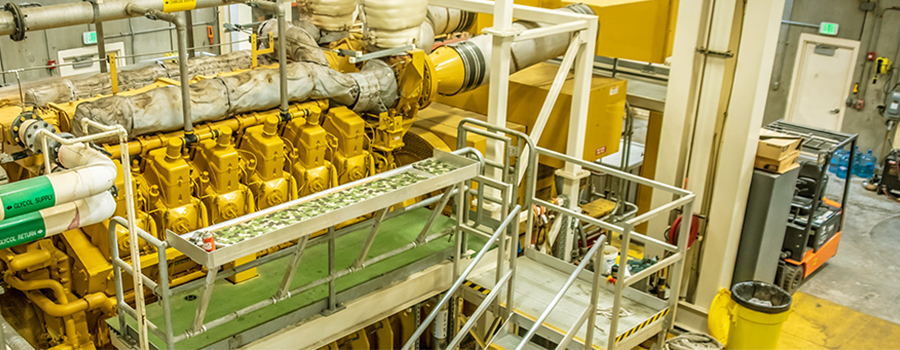
King County set a renewable energy goal that 80% of all the energy in its government facilities must come from renewable sources by 2025, and this goal will increase to 95% in 2030. To contribute to this goal, we will continue advancing our processes and investigate opportunities to increase the amount of renewable energy we use in our operations.
By generating and using renewable energy, we lower our carbon footprint and overall energy expenses, reducing the cost burden for ratepayers and freeing up funds for reinvestments.
How we get there
Biogas
The production and use of biogas on-site reduce the energy (electricity, natural gas, and propane) the Wastewater Treatment Division (WTD) needs to purchase from external sources. Some of the biogas WTD produces is converted to electricity and heat through cogeneration engines. At the same time, some of it is scrubbed (cleaned) and sold to local energy utilities as renewable natural gas (RNG) for use in buildings, homes, and natural gas-powered vehicles. Scrubbing gas removes carbon dioxide (CO2) and other impurities to make it suitable for combustion in engines and boilers or to be imported into natural gas pipelines RNG.
WTD has been purifying and selling RNG from its South Treatment Plant since 1987, longer than any wastewater facility in the country.
Renewable natural gas (RNG)
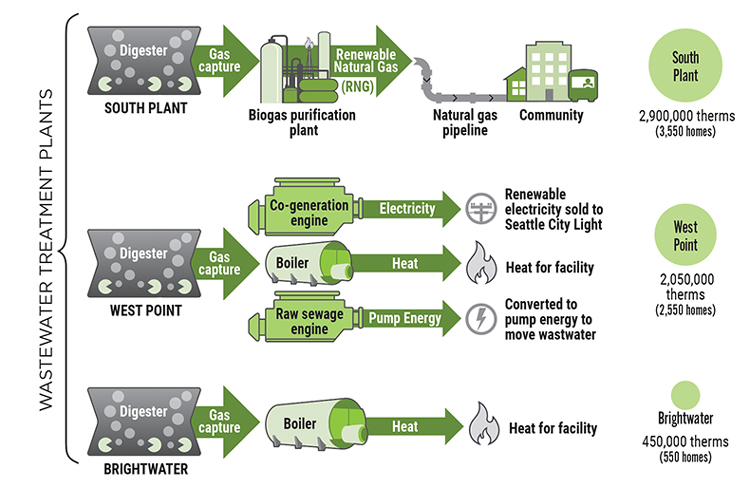
Cogeneration (combined heat and power)
Cogeneration, often called "co-gen," produces energy and heat from the same source. WTD currently has two cogeneration systems that run on biogas, an important renewable energy source. Internal combustion engines at West Point Treatment Plant and gas turbines at South Treatment Plant.
How co-gen works
West Point has a long, successful history of energy recovery and is the largest combined heat and power facility in Washington state to use biogas from digesters. This system reduces our need to purchase electricity and propane.
The internal combustion engines create electricity from digester gas and capture the heat created. These engines produce renewable electricity we use throughout the treatment plant. We also capture heat energy from these engines and reuse it in our treatment process and employee-occupied workspaces.
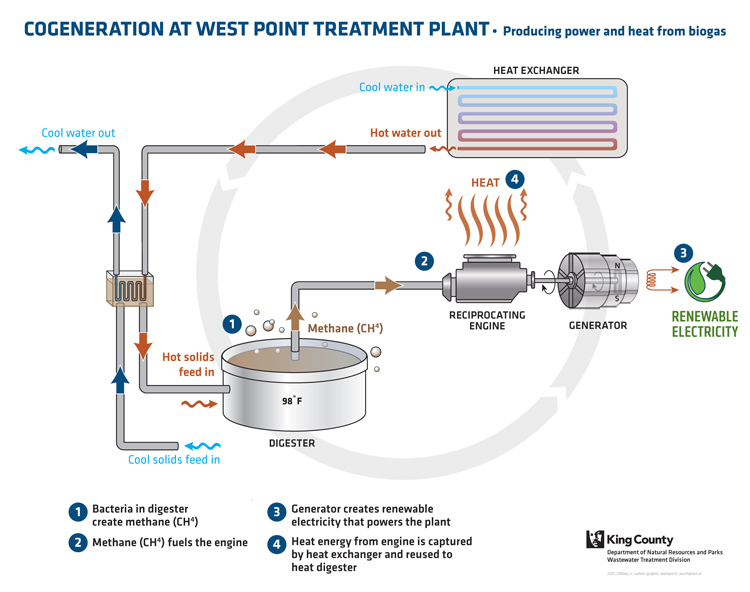
When we use biogas in South Plant's co-gen system, it provides us with two types of renewable energy. Once raw biogas is scrubbed (cleaned), it’s sent to gas turbines where fan blades generate (1) renewable electricity and (2) heat. This heat is captured and sent through heat exchangers, where it’s used to help maintain the heat of our digesters—then the cycle starts all over again creating more biogas.
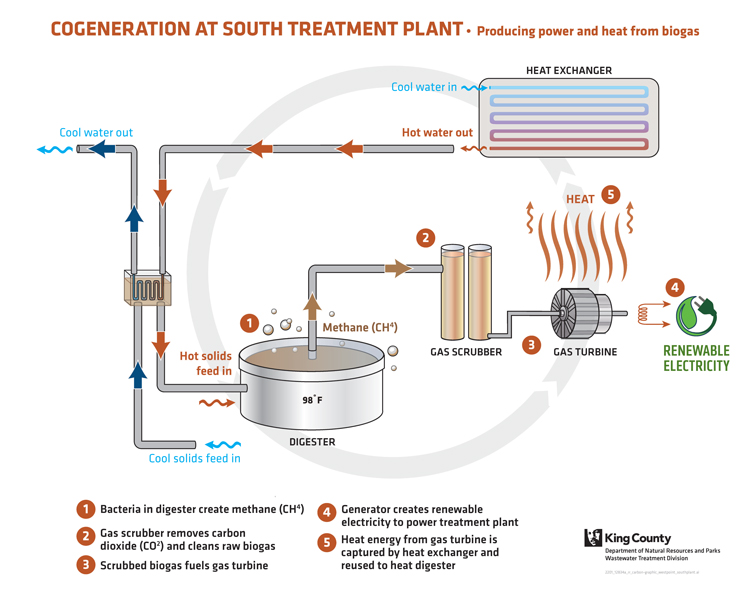
The benefits of Co-gen
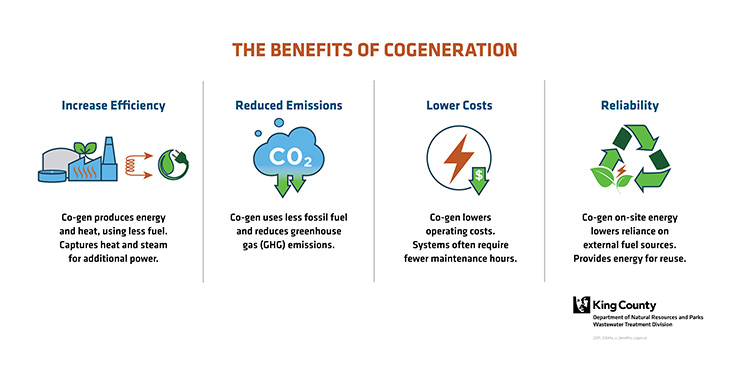
The heat loop (at Brightwater)
As with all our treatment plants, Brightwater uses a heat loop. Hot water generated from the boiler system is transferred underground, dispersed throughout the plant for process and space heating needs, and recirculated. This renewable energy is also used to heat the Brightwater Center, our education and community events facility. Reusing this heat energy lowers our use of fossil fuels and helps the center maintain its LEED Platinum certification.
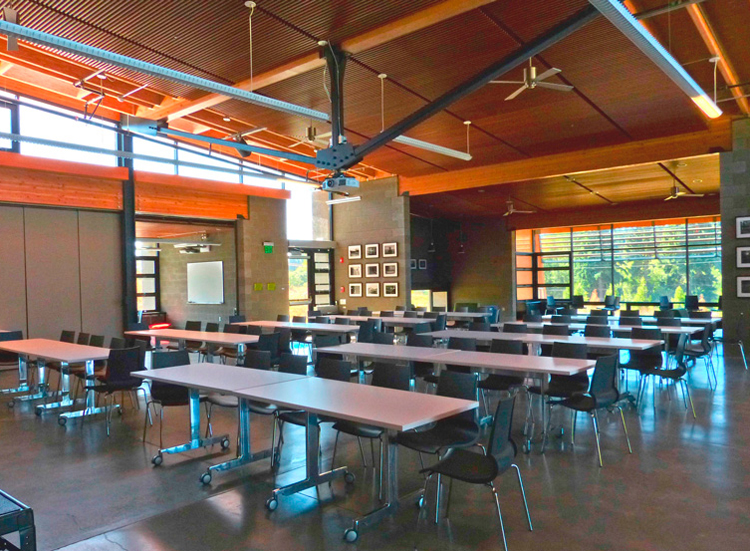

 Translate
Translate